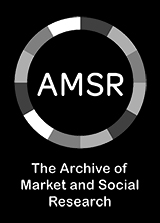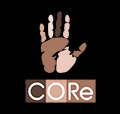Survey Sampling and Related Techniques

Date and time
This event has taken place
Location
Online
Virtual training course
Members
£325 + VAT
Non-Members
£475 + VAT
Company partners
£350 + VAT
Please let us know if you have any accessibility requirements ahead of the event
Company partners
1 CPS Voucher
How to be confident that your insights are compatible with the origin of the raw data?
Survey Sampling and Related Techniques
Course context
This is perfect for researchers working on quantitative surveys, discussing best practice in sampling methods, its importance and how this can impact on the statistical validity of the survey findings. We'll also address how to ensure that the data are collected in a robust way so that they lend themselves to advanced analyses and appropriate decision making. The course covers a range of topics around survey sampling, including statistical reliability, setting samples sizes, the testing of significance and survey weighting. The early part of the day covers useful and relevant background topics to prepare delegates for the rest of the day, such as data presentation, probability and basic survey analytics.
Level
Advanced
Who will benefit from this course?
Delegates will be researchers or client-side research commissioners with at least 1-2 years of quant experience who are fairly comfortable with basic mathematical principles; especially those working on large scale public-sector surveys (face-to-face or telephone) and/or where results are required with a high degree of accuracy. Buyers/receivers of research will find this course useful too, so that they will understand what questions to ask about the means by which the information was collected, thus helping them take a more critical stance.
Delegates should be reasonably numerate and not be put off by some basic mathematical equations.
Aims and objectives
- Using, understanding and presenting basic statistics, summary data and tables/charts
- What probability is and its role in sampling
- What is normal distribution and what are its practical applications
- The precision of survey estimates and findings /statistical reliability
- How to generalise from samples to populations
- Steps to take and what to consider in generating valid and precise samples
- How to determine the right sample size for a given level of precision
- How to determine the right sampling method to optimise accuracy
- How aspects of sample design can impact on precision
- Survey results weighting to represent target populations
- How to recognise common pitfalls
Learning objectives
- Appreciate how aspects of the sample (design/size) can impact on its results.
- Know what steps to take in considering how to take an optimum sample.
- Know how to calculate the precision of a sample.
- Know how to determine whether changes in results or comparisons are genuinely different.
- Understand how to present and interpret data and be comfortable with basic statistical concepts.
- Understand probability and its role in sampling.
- Appreciate how certain aspect of the sample design can impact on results and their levels of precision.
- Know how to go about drawing a fit-for purpose sample and be able to point out flaws in designs.
Testimonials
"Excellent for researchers of all levels, gives great practical insights of sampling and weighting!"
Fahad - Publicis Groupe, June 2020
"Comprehensive and delivered by an expert - but requires brain power!"
Amy Jones - Girl Effect, June 2020
"Helpful in understanding the background to carrying out surveys and analysing results."
Anne-Marie Burgoyne - DVLA, June 2020
Additional Information
Date and time
This event has taken place
Location
Online
Virtual training course
Members
£325 + VAT
Non-Members
£475 + VAT
Company partners
£350 + VAT
Please let us know if you have any accessibility requirements ahead of the event
Company partners
1 CPS Voucher
Get the latest MRS news
Our newsletters cover the latest MRS events, policy updates and research news.










